Carving up Orcs in Middle-earth: Shadow of War is as much fun as it was in 2014, but every decision made surrounding that central conceit seems to have been drawn up by a marketing department, rather than the creative minds that once hypnotized us with the innovative Nemesis System.
I have mixed feelings about Middle-earth: Shadow of War. As someone who called out Warner Bros. Interactive Entertainment on the offensive DLC practices for which this game has become known, I think that it is important to make something very clear: I will review this game on its own terms, but I will not separate it from the exploitive systems shoehorned into an otherwise promising title. Still, what follows is my evaluation of the game beneath the tarnished veneer of customer predation, evaluated on its own terms wherever possible.
Middle-earth: Shadow of War is the much-hyped sequel to the 2014 open-world Orc slaughtering simulator Shadow of Mordor. In it, the hero Talion returns alongside his elven wraith ally to wreak havoc amongst the massing strength of Mordor’s savage denizens. This time around, the previous game world’s two regions have expanded to five, and the Orcs are joined by massive Ologs (hulking Troll-like enemies) ripe for supernatural recruitment into your army. The free-flowing combat featured in the first game has been expanded, adding almost universally interesting modifiers to the suite of new and returning skills. Once again, you will fight and tame your enemy’s units, but this time you will also be given the chance to take and hold territory in the game world of your own.
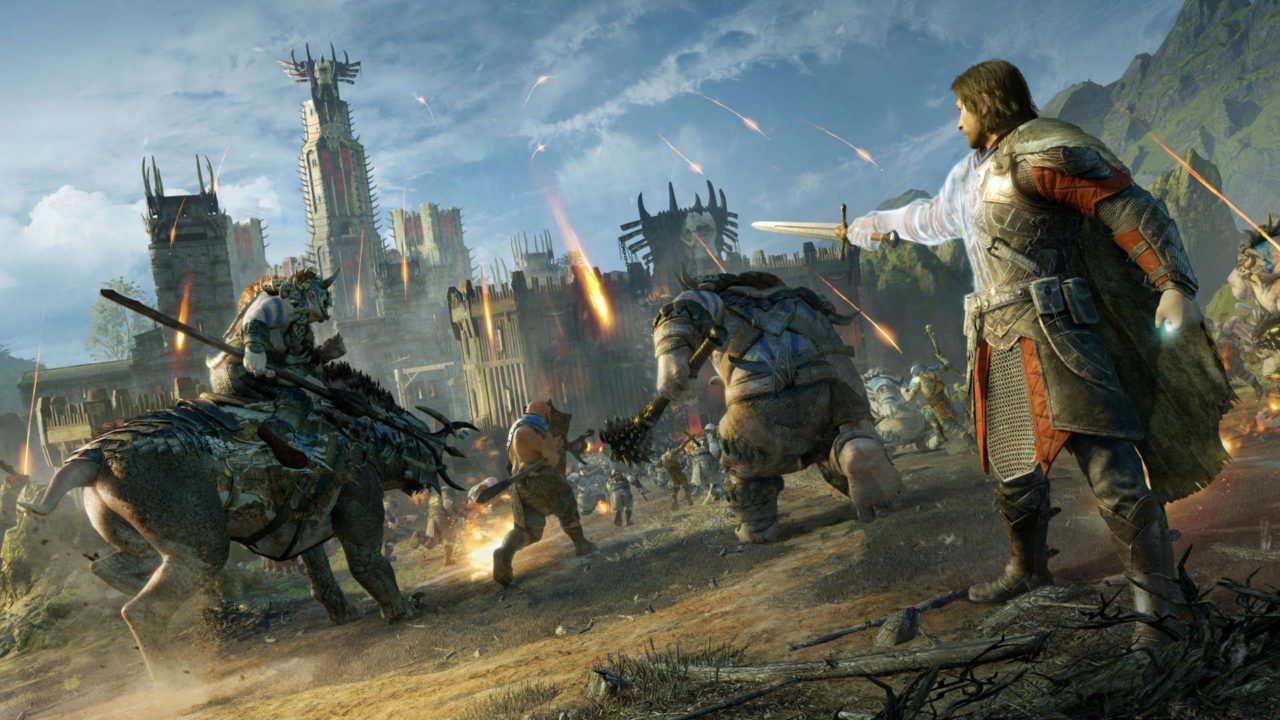
At first blush, the game doesn’t look like much. Without direct visual comparison between it and its predecessor, it is hard to see how the game’s graphics have progressed. The vast majority of combat animation looks to have been stripped directly from Shadow of Mordor, along with much of the visual effects. The aesthetic, for the most part, lacks any sort of punch or distinct personality. All of the game’s visual focus has been saved for the Orcs, whose style and personalities are quite obviously meant to take center stage.
In an attempt to give them more distinctive traits, Shadow of War leans hard into the ludicrous. An Orc in a tricorn hat croaking bad poetry? (“Your fate has gone from bad to worse. You face an Orc who speaks in verse!”) Check. An Orc who raves like an only slightly wartier Alex Jones about how the Nazgul are staging the entire conflict? Yep. How about an Olog from Australia? No, not just with an accent. This one will call you a “drongo” and give cringe-inducing “Crocodile Hunter”-esque tutorial monologues — in the middle of combat. These are just a few examples of a roster of enemies that eschew consistency in the name of variety and joyfully assassinate any immersion with tongue lodged so firmly in cheek as to cause some sort of mouth sore.
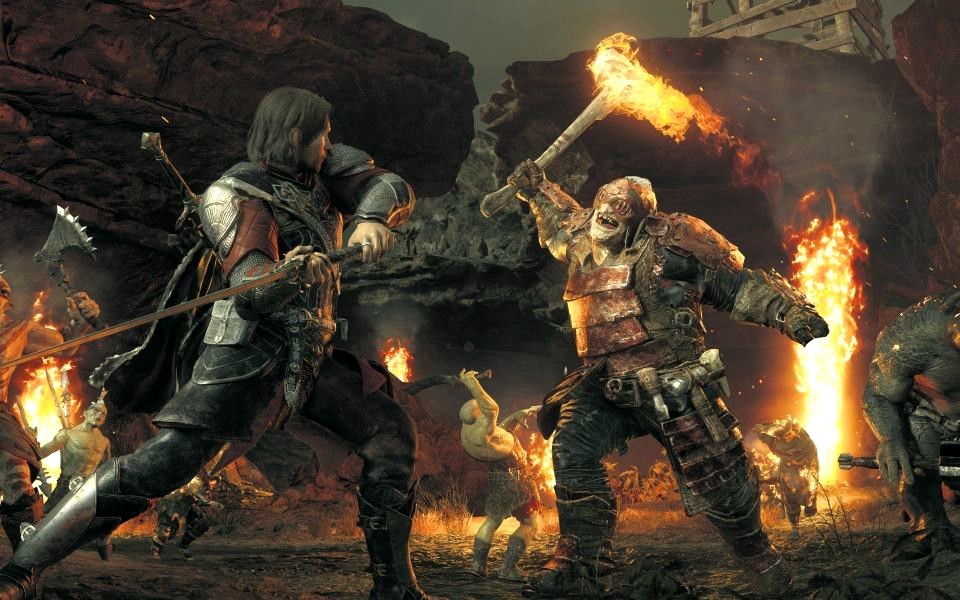
Those design choices are only slightly less baffling when held up against a game with quite possibly the most awkward story I’ve come across in recent memory. You can feel developer Monolith straining against the Lord of the Rings license, and sometimes see the seed of a game that would be far better without its overtones of Tolkien mythology that it subverts at every possible opportunity. There is a world in which WBIE allowed Monolith the chance to build a world around their ideas, instead of vice versa. This is not that world.
Shelob is a supermodel. The Nazgul are trivial minibosses. There’s an Elf ninja in a mithril body glove, and the only character with even the hint of a real personality is a Minas Ithil General’s daughter named Idril, who is eliminated from the game after the first act. As one protector of the Palantir around which so much of the game revolves, she might have been a more interesting protagonist than Talion, as bland a caricature of action hero as exists in gaming. The ranger once again has all the depth and personality of a mayonnaise sandwich, wearing generic stubble and a brooding glare that looks like they could have been ordered from some Middle-Earth SkyMall.
In the name of a very relevant example, let’s circle back to Shelob, who in Tolkien’s world was born of the primordial spider Ungoliant and “who was there before Sauron, and before the first stone of Barad-dûr; and she served none but herself, drinking the blood of Elves and Men, bloated and grown fat with endless brooding on her feasts, weaving webs of shadow; for all living things were her food, and her vomit darkness.” In Shadow of War, she represents perhaps the most egregious error in a game rife with the dumbing down of one of the most complex fantasy worlds ever created, depicted as a sorceress with a by-the-numbers origin, given the ability to see visions purely to sew together otherwise unconnected missions.
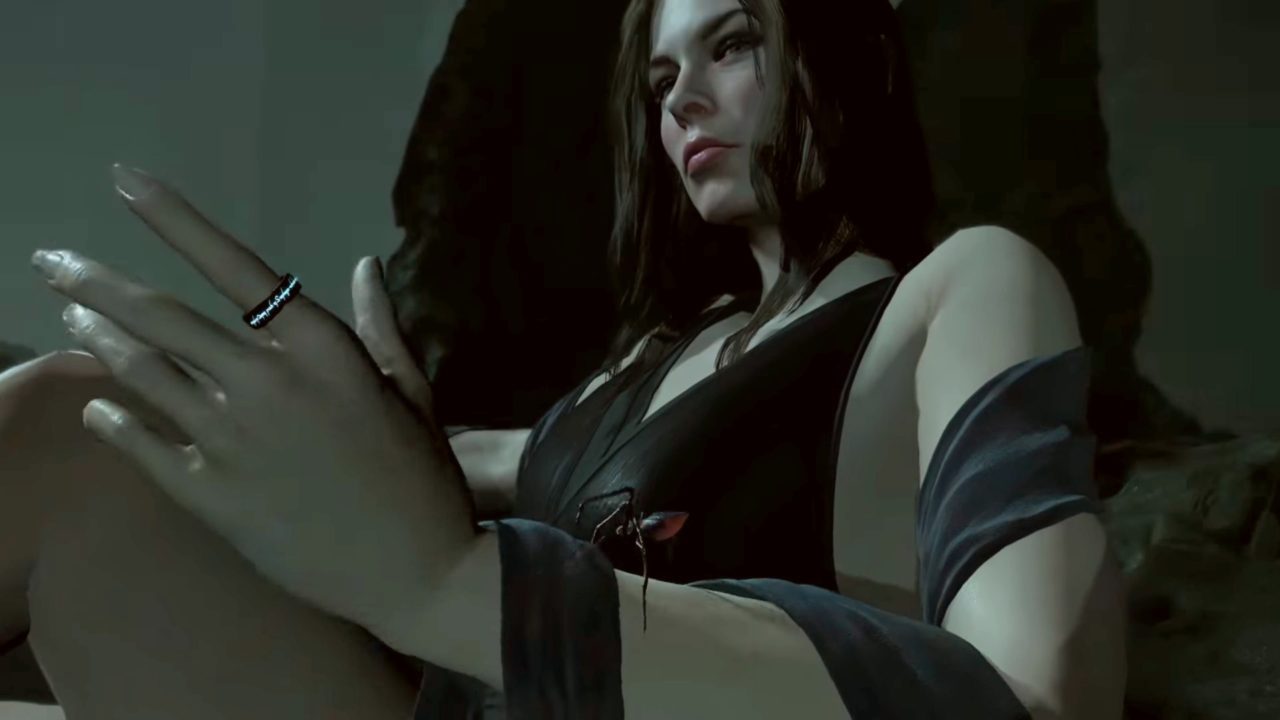
Moreover, her redesign was entirely unnecessary. Shelob is fascinating as an ancient spider demi-god. She is significantly less so as a waspish magic seductress. Bad character design is one thing, but this is excellent character design crucified for… what? Shelob is a hollowed-out shell, and her gutting comes seemingly without anything added to the package in exchange. Like so many things in the game, it reeks of a design-by-marketing-team approach.
So far, this is an admittedly bleak picture of a game that, all things considered, isn’t offensively bad. In fact, when all of the gears of the Nemesis system are functioning properly, Shadow of War once again presents an experience that is both engaging and unique. The Nemesis system still throws a variety of enemies with varying strengths and weaknesses into the fray, and events are regularly introduced to throw a wrinkle into your plans. The Orcs are more than willing to fight amongst themselves if you aren’t around, and playing their chaos to your advantage is just as much fun as it was in the first game.
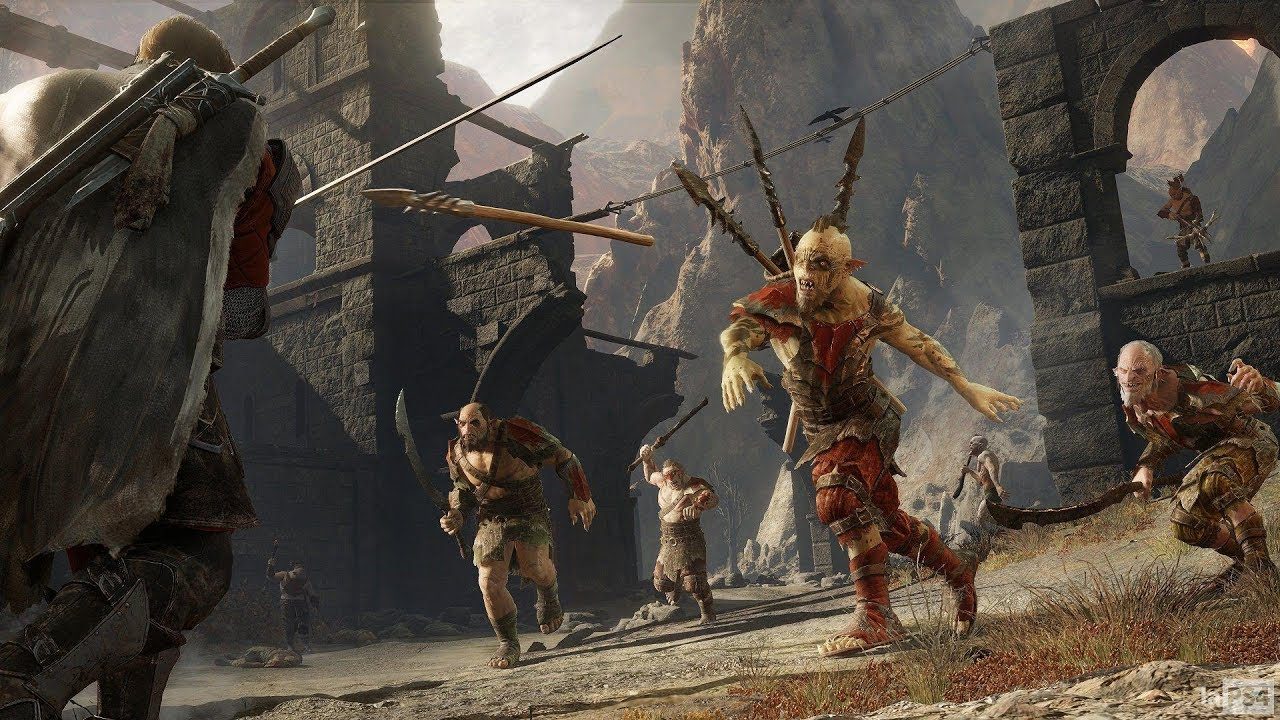
To further facilitate your lethal scheming, the equipment system has been augmented to include an array of rarities and quest-locked item effects, asking you to play the game in a certain way to strengthen the pieces of equipment you prefer. Each equipment slot — as opposed to the items themselves — can be further enhanced by inserting one of three types of gems, the duplicates of which can be combined into more powerful versions. All of these dovetail into the expansive system of powers and allow you to customize Talion’s tactics to match your own.
You probably won’t get much out of any of it until Act 2, however. The first act, even rushed, represents hours of monotonous questing with only the faintest shadow of a coherent narrative. In another mystifying decision, the game seems to delay your chance to mark and recruit your own Orcs — the central conceit of the franchise — even longer than the first title did. That means hours of mindlessly hacking and slashing without enough levels to make your skills interesting, or the ability to interact with the Nemesis system. Frankly, I felt as if the game was actively trying to discourage me from playing it.
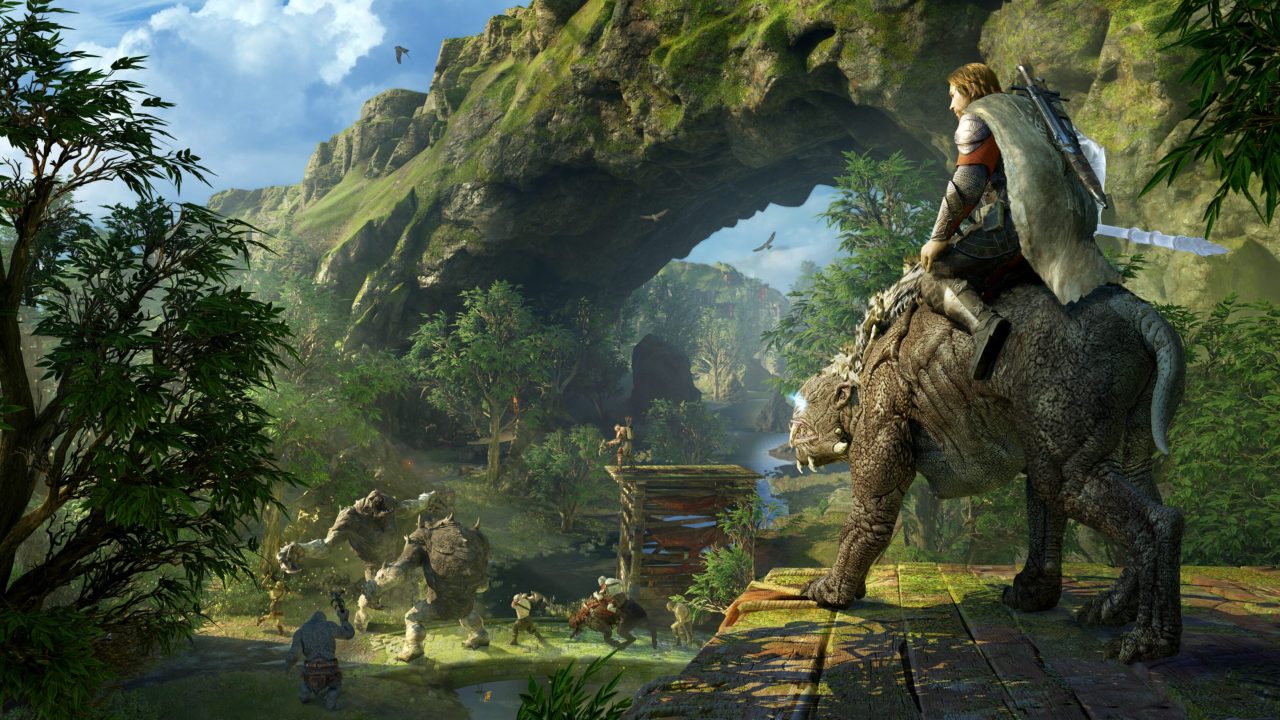
So, despite ill-advised alliances with ghost-elves, Totino’s pizza rolls marketing campaigns with exclusive content, and a focus-tested exposition machine in a slinky black dress aside, Shadow of War manages to be quite a lot of fun for a while. If you ignore the clumsy attempt to extend gameplay into loot-box-purchasing grind in the game’s final act, there is plenty to enjoy.
Shadow of War is a safe and not particularly daring sequel to a solid experience, and fans of the first will almost certainly enjoy themselves on another tour through Mordor. Being a fan of Lord of the Rings fiction isn’t a prerequisite — in fact, it is something best set aside. Just try to ignore the banner ads and marketplace trinkets. If you really need that “true ending,” there’s always YouTube.
Follow Nate Church @Get2Church on Twitter for the latest news in gaming and technology, and snarky opinions on both.
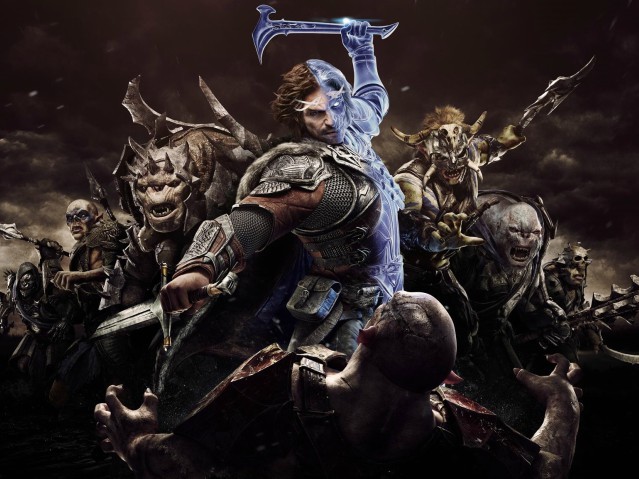
COMMENTS
Please let us know if you're having issues with commenting.